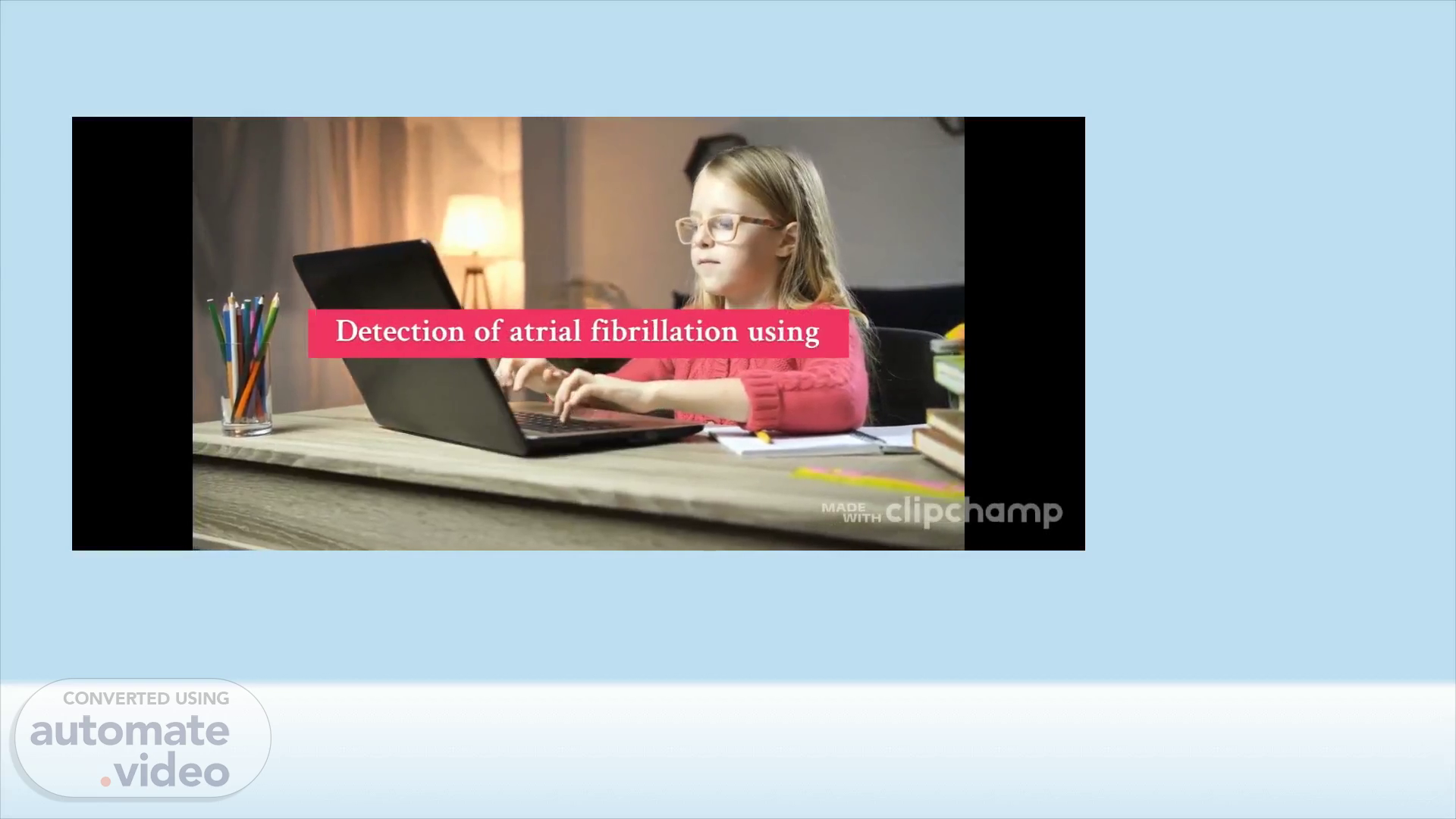
PowerPoint Presentation
Scene 2 (12s)
Atrial fibrillation is a supraventricular arrhythmia that originates above the ventricles and causes an irregular and often abnormally fast heart rate with stretching of myocardium ..
Scene 3 (23s)
abstract. AF is one of the most common cardiovascular diseases causing 250000 per year ..
Scene 4 (37s)
Atrial fibrillation is a major cause of stroke in today world with 6 million patients in USA alone ..
Scene 5 (46s)
150/0-300/0 OF PATIENTS EXPERIENCE NO SYMPTOMS (i.e., silent AF) 2!lGL'$ VE) Lao e,'vvsdblovge EXbEBlEMCE OE bVLlEL,1ie.
Scene 7 (1m 1s)
.. c 2016 MAYO. The most common detection technique for atrial fibrillation in practice are ECG and MCG . An electrocardiogram ( ECG ) is a simple test that can be used to check your heart's rhythm and electrical activity. Magnetocardiography (MCG) is a contactless technique that remotely measures the straymagnetic fields produced by cardiac currents in the heart..
Scene 8 (1m 19s)
Despite the wide use, ECG MCG. It can only measure cardiac electrical activity indirectly because the true signals from the heart are distorted by elements of electrical resistance that lie between the source of the signal in the heart cells as the ECG electrodes placed on the skin surface -measurements very directional in nature ..
Scene 9 (1m 45s)
Better technology to be held in practice: MIT. Magnetic induction tomography is a novel non-invasive and non-contact imaging technology, which can be used in medical diagnosis by reconstructing the electrical distribution of biological tissues. Our device does not require adhesion to the patient’s body or to the inner heart’s surface, with obvious advantages in terms of stability. MIT has an advantage on non radiation, low cost, no use of drugs, easy to take and long monitoring ..
Scene 10 (2m 7s)
Idea of proposal. However, one of the main limitations of this approach is the limited sensitivity of the magnetic field sensors in use. So we propose, applications of quantum sensors in MIT enable quantum sensors to detect any arbitrary frequency, with no loss of their ability to measure nanometer-scale features. Therefore, we propose to use the quantum sensor which is reported to increase the resolution up to nanometers..
Scene 11 (2m 38s)
.. Sensor array Quantum sensor Conditioning electronics Field control and lvleasured signal control Host Computer Reconstruction algorithm Cll C21 • CMI Dl II = C12 C22.CM2 D2 C13 • CM3 D3 12 13 IN CINC2M .CMN fig.2. A block (liaopanm of proposed systclll with quantum sensor.
Scene 12 (2m 50s)
conclusion. This proposes an idea that MIT with quantum sensors can become a rapid imaging technology and the optimal diagnostic tool for AF and other continuous disease monitoring because of its advantages of noninvasive, non-contact, and portability. With the research of sensor optimization, noise suppression, complexity, etc , this technology can achieve high time and space resolution. In our opinion, successful applications of quantum sensors in MIT enable quantum sensors to detect any arbitrary frequency, with no loss of their ability to measure nanometer-scale features. In this respect, it is recommended that a number of benchmarks of quantum sensors in MIT should be developed and adapted by the research community for the process of validation of the proposed models. MIT has already been listed as most feasible to meet the needs of accurate, rapid and low cost clinical diagnosis for brain diseases..
Scene 13 (3m 27s)
Thank you for watching …..